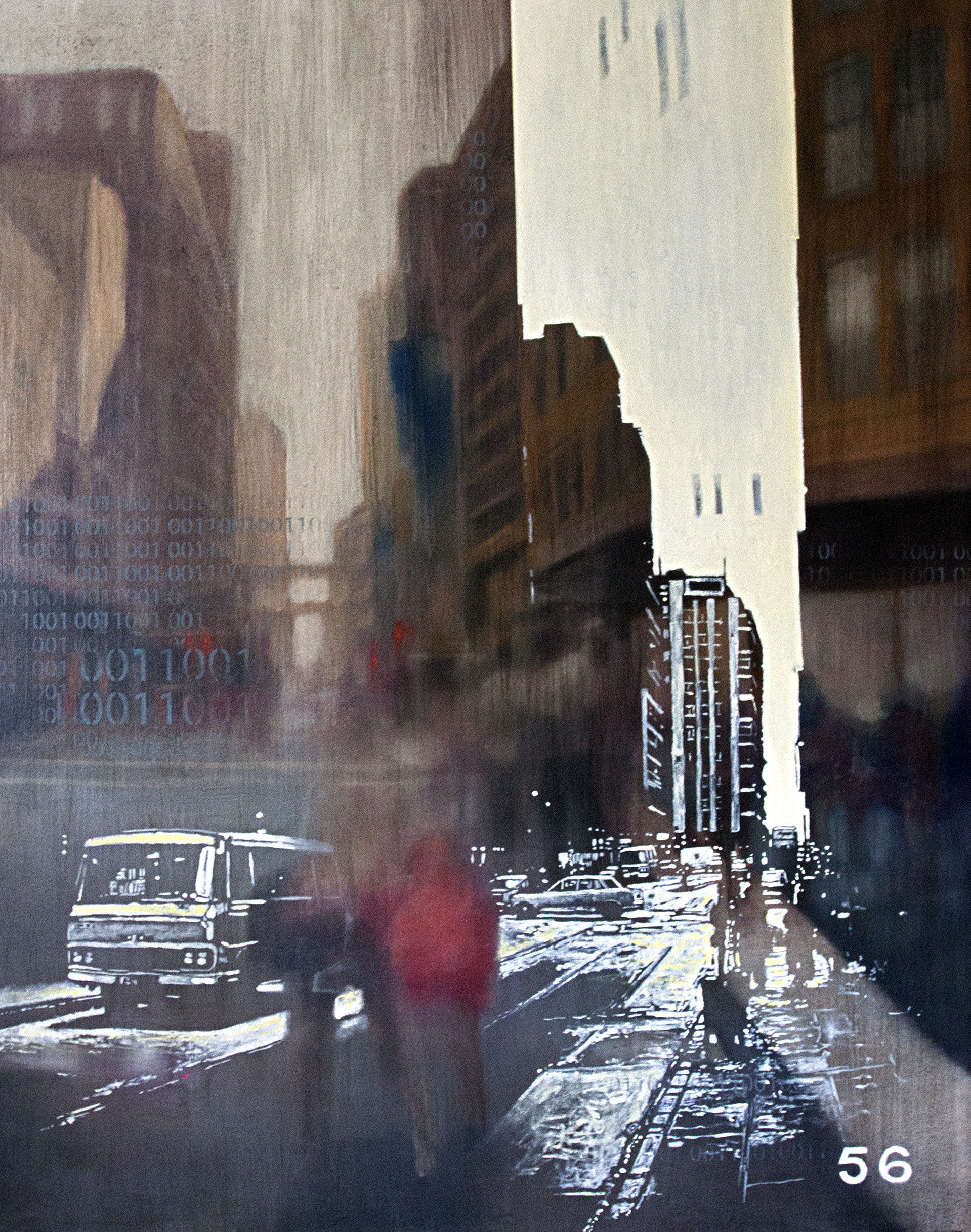The Advertiser Contemporary Art Award
For the most outstanding contemporary work in any medium by a 2025 SALA Festival artist.
- 1-31 August 2024
- Mon-Fri 9am-5pm
- Keith Murdoch House, 31 Waymouth St, Adelaide
The winner of this award will be announced at the SALA Finissage event on Friday 5 September.
For sales, please contact artists directly. Contact details are listed below.
ASHLEY BASTIAN - Raw Clay
Layers 01, 2025, ceramic, 37 x 24 cm
$1,900
My artistic practice centres on creating unique “Layers Vases” from clay. I begin by crafting the vases, then enhance them with multiple layers of clay, adding intricate textures and dynamic forms. This layering technique enriches the visual complexity of the work and invites tactile exploration. The raw, unglazed surfaces highlight the beauty of the material, fostering a deep connection with viewers. Through my Layers Vases, I aim to evoke emotion and inspire contemplation, celebrating the richness of handmade art in everyday life.
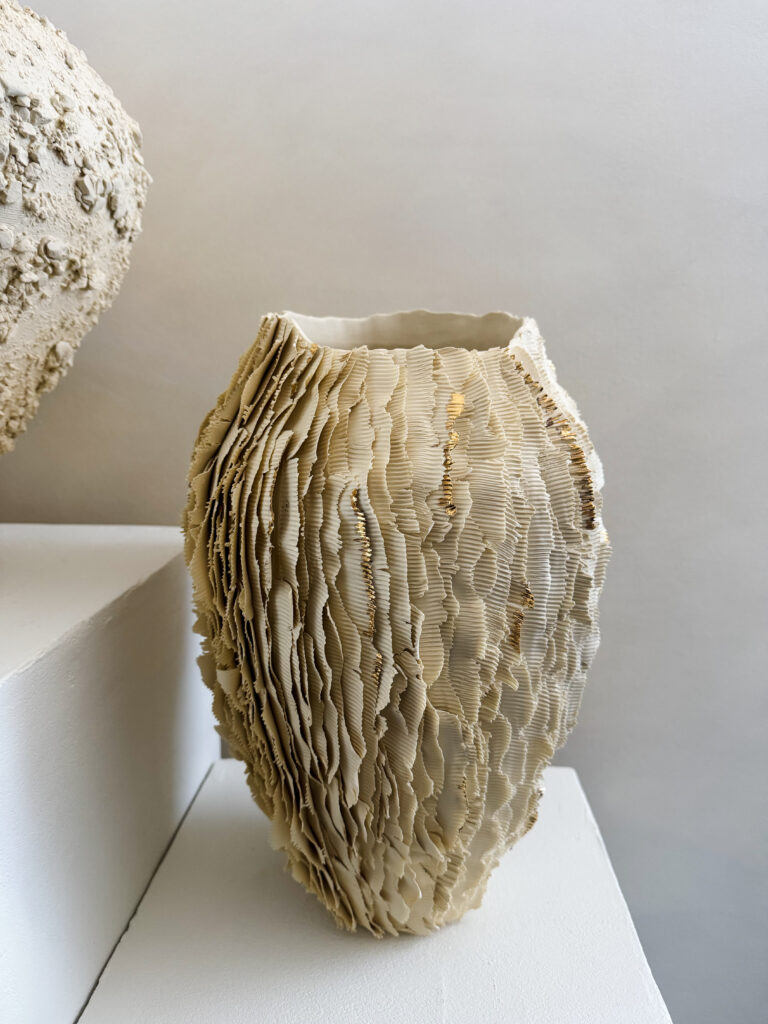
Bundy bannerman
Feeding Popeye, 2025, acrylic on canvas, 76 x 101 cm
“Jack of all trades, master of none, but better than being a master of one” So the saying goes. I wore lots of different hats in my decades of bush-work and truck driving and I am trying to express them all in my paintings. I would occasionally deliver to ships in dock and it was quite the change from the dust of the outback. The ship might have been impressive, but I still love my truck more.
Carolyn Corletto
Seriously, they are just boobs, 2024, wool, felt, cotton stuffing, found chair, 180 x 180 cm
The first thing that many women do upon returning home is remove our bras, the restrictive corset of the modern era. There’s excessive attention to and discourse around women’s breasts. Breasts are not sexual organs but modern cultural sexualisation has cast them as disembodied objects rather than female organs to provide food for babies. What a woman wears under her clothes is her business alone but women have found themselves subject to commentary that seeks to shame, objectify or threaten them. My work seeks to normalise discourse around our experiences and break down cultural structures that support violence against women.
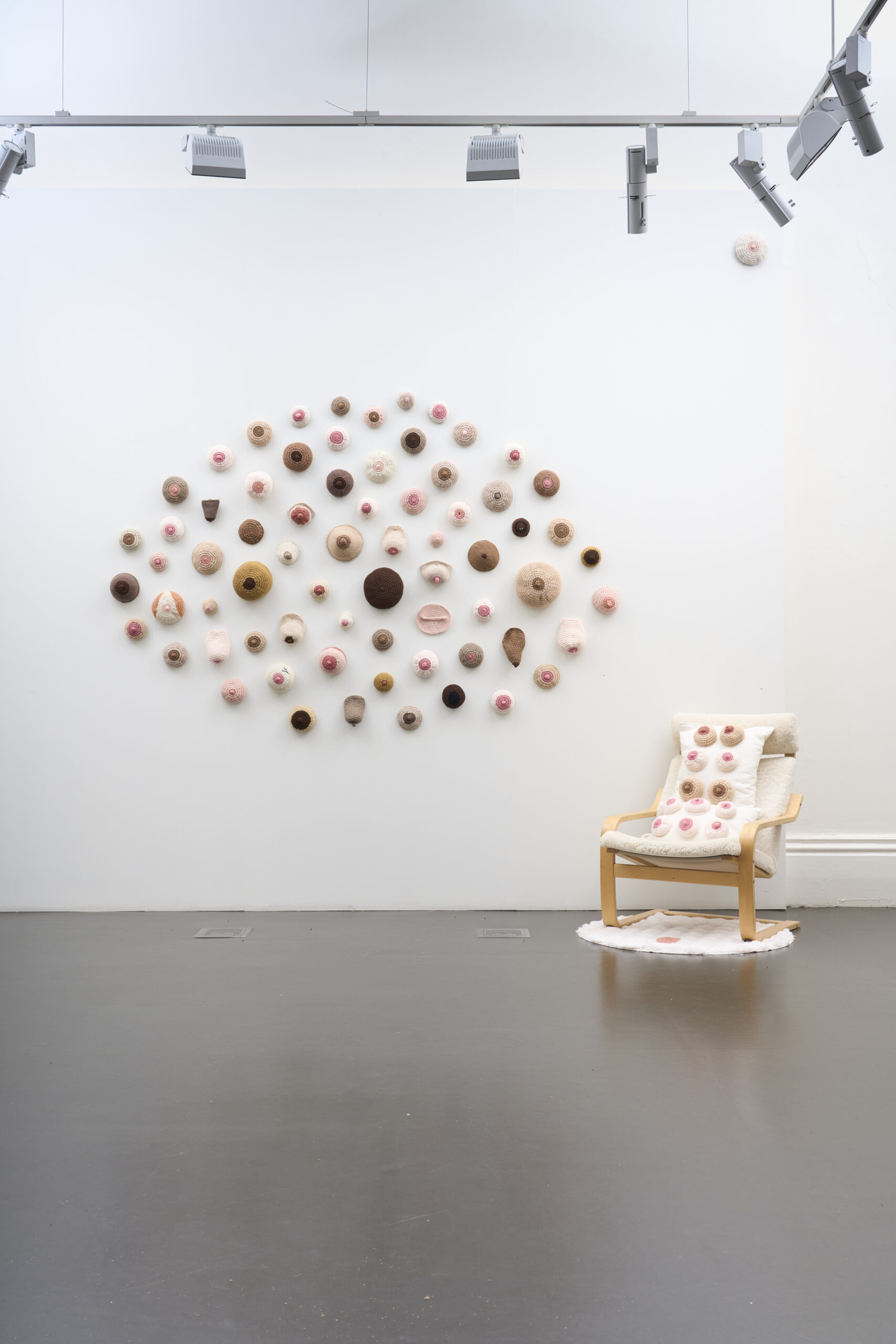
Catherine Fitz-Gerald
Dawn dust, 2025, oil on canvas, 82 x 122 cm
$3,300
In the dawn light, sheep kicked clouds of dust in the grassless paddocks as the trees and far hills blurred into dreamscapes. Grief trembled in voices, lives in suspension, like dust motes in air awaiting rain.
The skies, clear of any cloud, heralded no relief. The current drought and endless dust coating the land, underpinned the stories shared during the ‘If fabrics could speak…’ tour of the north.
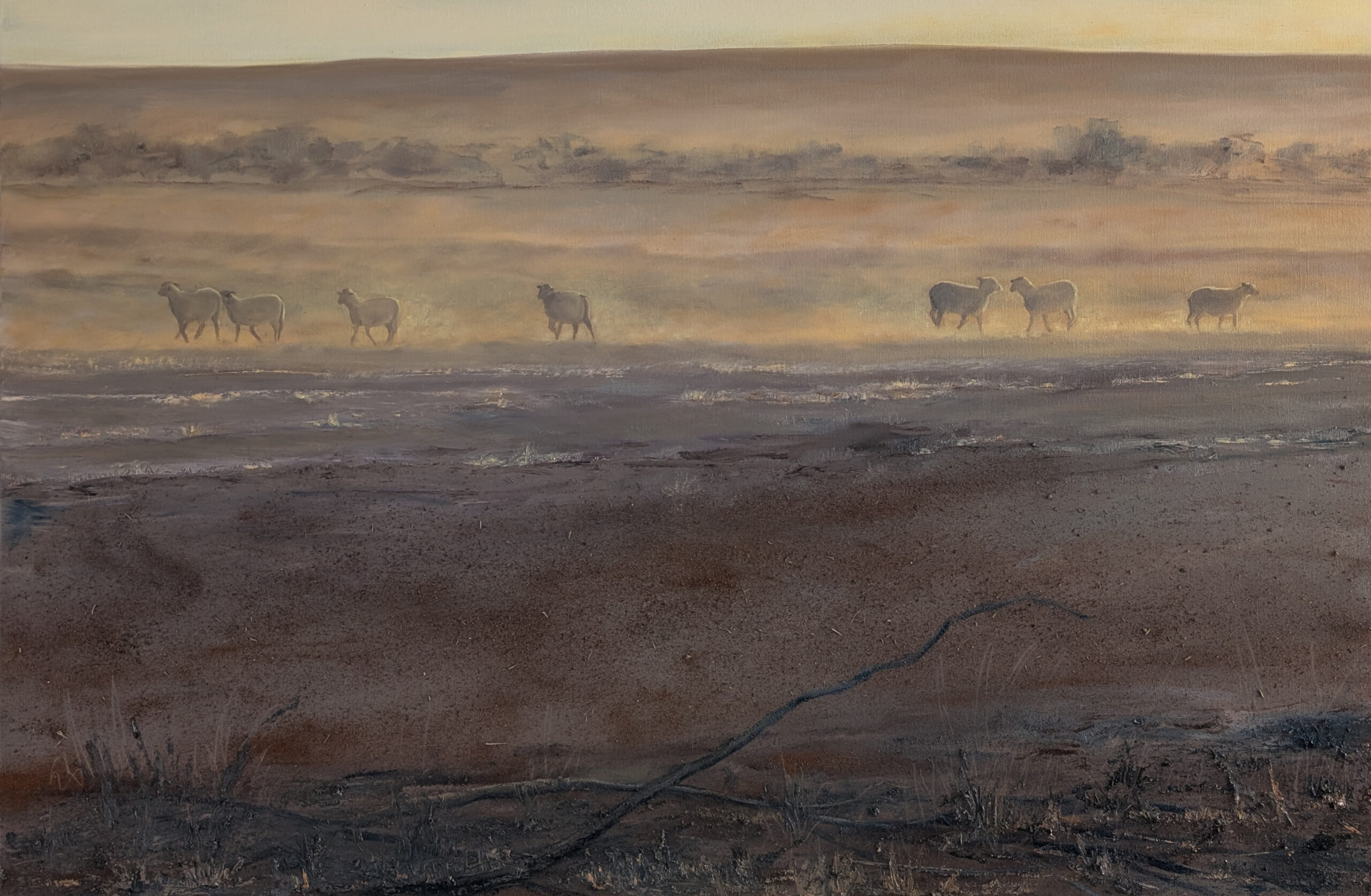
Catherine Nguyen-Hoang
The weight of expectation distorts a space once meant for comfort, 2025, oil painting, 64 x 94 cm
$1,500
This painting began with paper cranes. Arranged within a self-defined structure, their compressed placement suggests accumulation and containment. Each crane functions as a symbol—representing memory, expectation, and emotional residue—collectively exerting pressure on the boundaries of the space. The composition uses realism in form, proportion, and lighting to maintain credibility, while subtle distortions in density and spatial balance evoke psychological tension. A restrained palette reinforces stillness, and a soft internal glow introduces contrast between weight and clarity. The work examines how internalised pressures can transform spaces once associated with comfort, and how light becomes a site of both exposure and release.
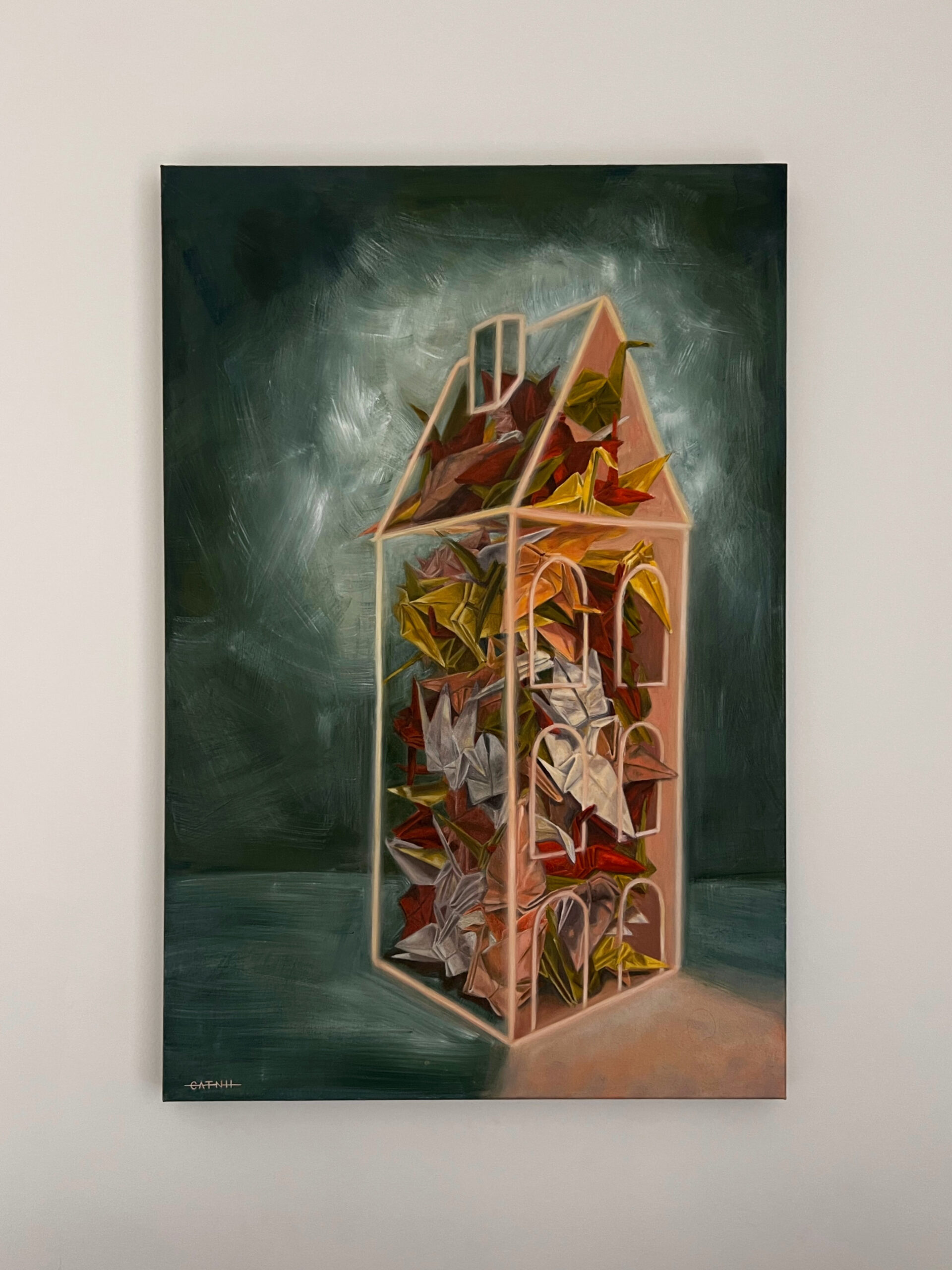
Eliana Della Flora
Examine, 2024, blown and coldworked glass with metal inclusions and found object (shear), dimensions variable
$1,100 (metal shears and 5 glass fragments)
Glass, formed through both traditional and experimental techniques, entraps molten interactions with metal, frozen in time, and dissected for inspection. The segments evoke geological or anatomical samples, as if seeking some hidden essence within. They bear traces of both precision and chaos: deliberate intervention and organic reaction. Subtle marks, almost textual, are revealed in the fractured sections, hinting at an elusive meaning. The work invites a quiet kind of searching, and a contemplation of the shared nature of matter and materiality. In the effort to understand, to categorise, to extract value, something remains just out of reach.
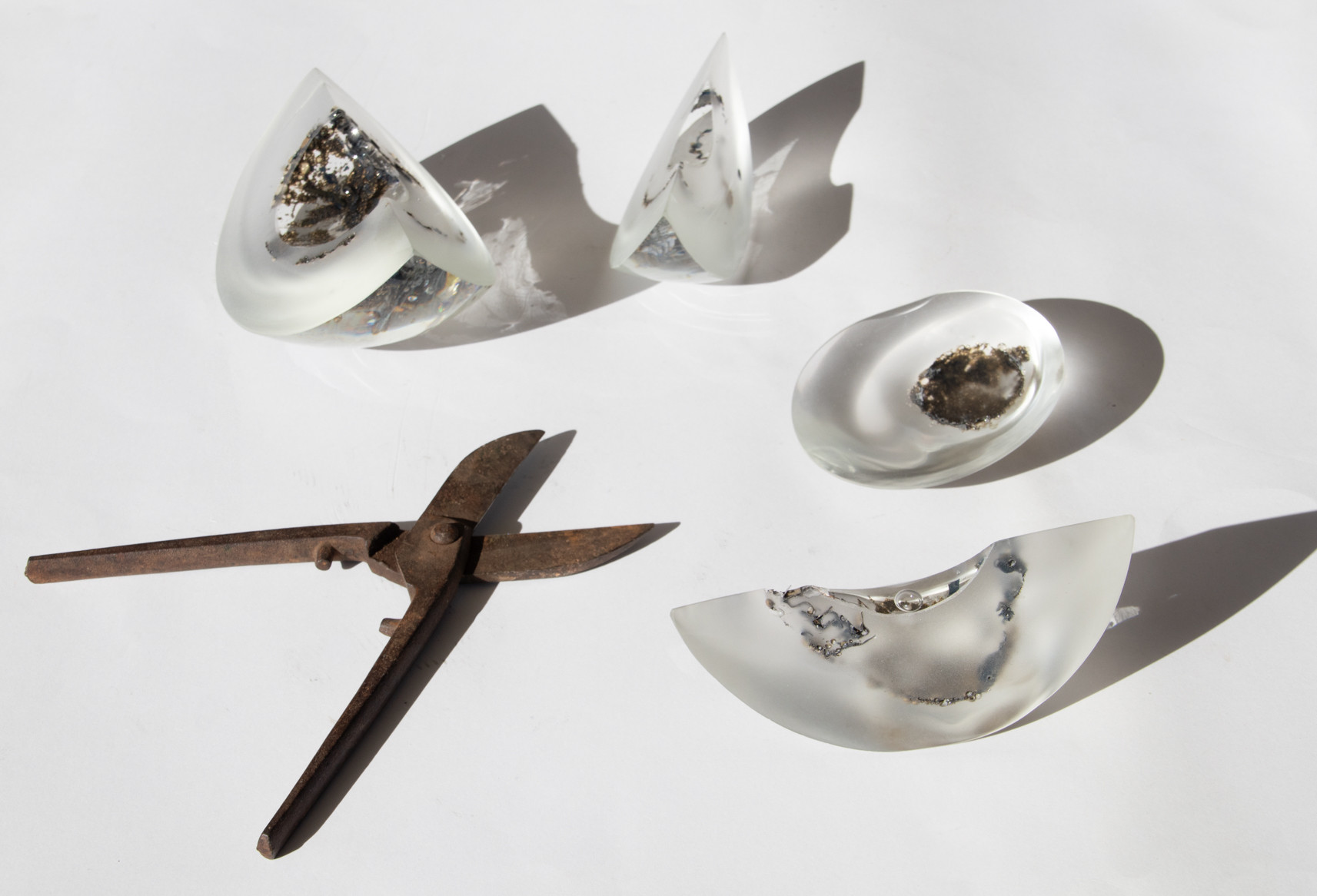
Emma Fält
May Fields of Wildflowers Grow in the Saddest Parts of You, 2025, mixed media on canvas, diptych 90 x 180 cm ea.
$5,800
Wildflowers grow in the saddest parts of you. Not in easy earth, but in the cracks, where the pain has dug deep, where sorrow has worn you thin. Our roots, unseen strength, don’t wait for kindness, they push through the dirt of hurt, finding life in what’s been broken. Petals rise, not as fragile gifts, but as proof. Not to erase the hurt, but to claim it – turning scars into fields of wildflowers, despair into defiance. The wildflowers bloom, not to end the sorrow, but to light a corner of it, holding space where the love once lived.
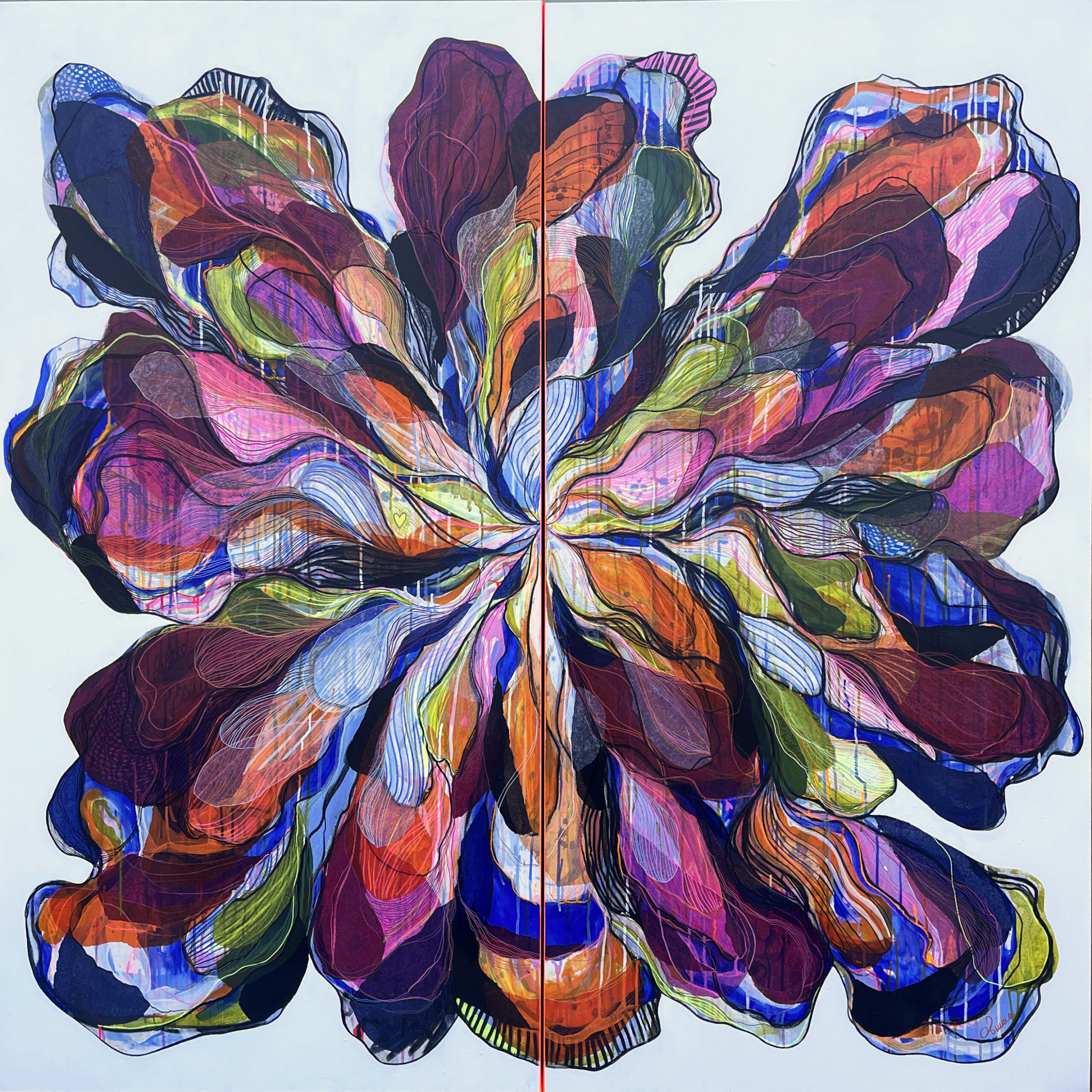
Georgina Mills
Life, 2025, plaster and hospital green bed sheet, 124 x 58 x 87 cm
NFS
Life and death are intrinsically linked, yet only comprehensible through the lens of the living. This sculpture explores that paradox, inviting the viewer to confront their own perception, questioning the limits of a singular understanding of death. By shifting the orientation of the figures, the work destabilases fixed viewpoints and creates space for multiple interpretations. At its core, Life is a personal meditation on existence—capturing a moment where two people experience a beginning and an ending simultaneously, individually, together, separate yet as one. The viewer is asked to reflect not only on mortality, but on connection, transformation, and shared humanity.
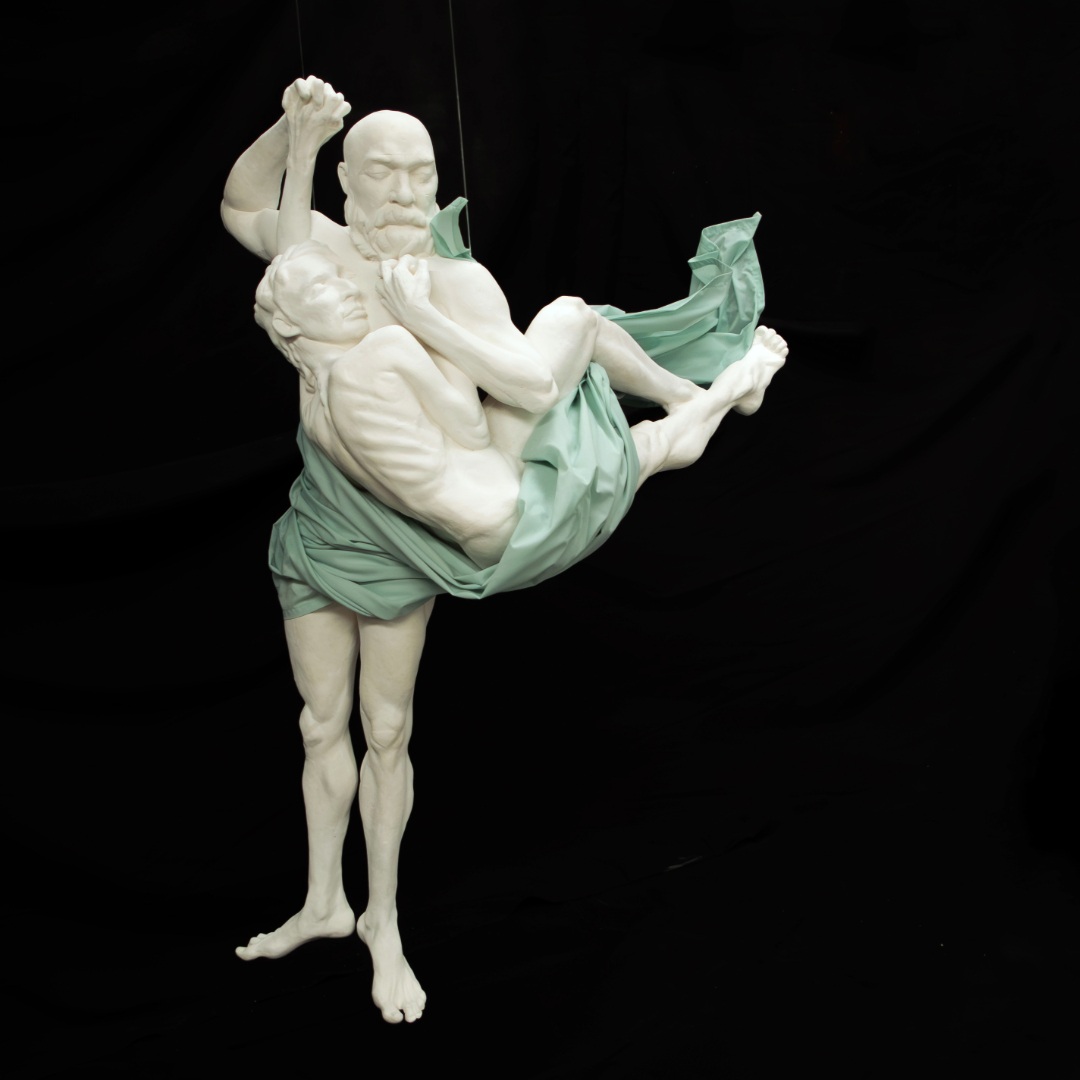
John Dow
Kimono Girl, 2025, oil paint on canvas, 80 x 61 cm
$750
John’s art practice focuses on still life painting in oil. His primary interest lies in composition, bringing together interesting items he has collected over the years. John aims to present narratives for the viewer to contemplate and interpret. A crucial element in the set ups is the use of shadows and they are an integral part of the narrative itself. Often, these shadows fall from unexplained sources, adding to the mysterious quality of the narrative. His work balances colour and design to produce enigmatic and often quirky work.
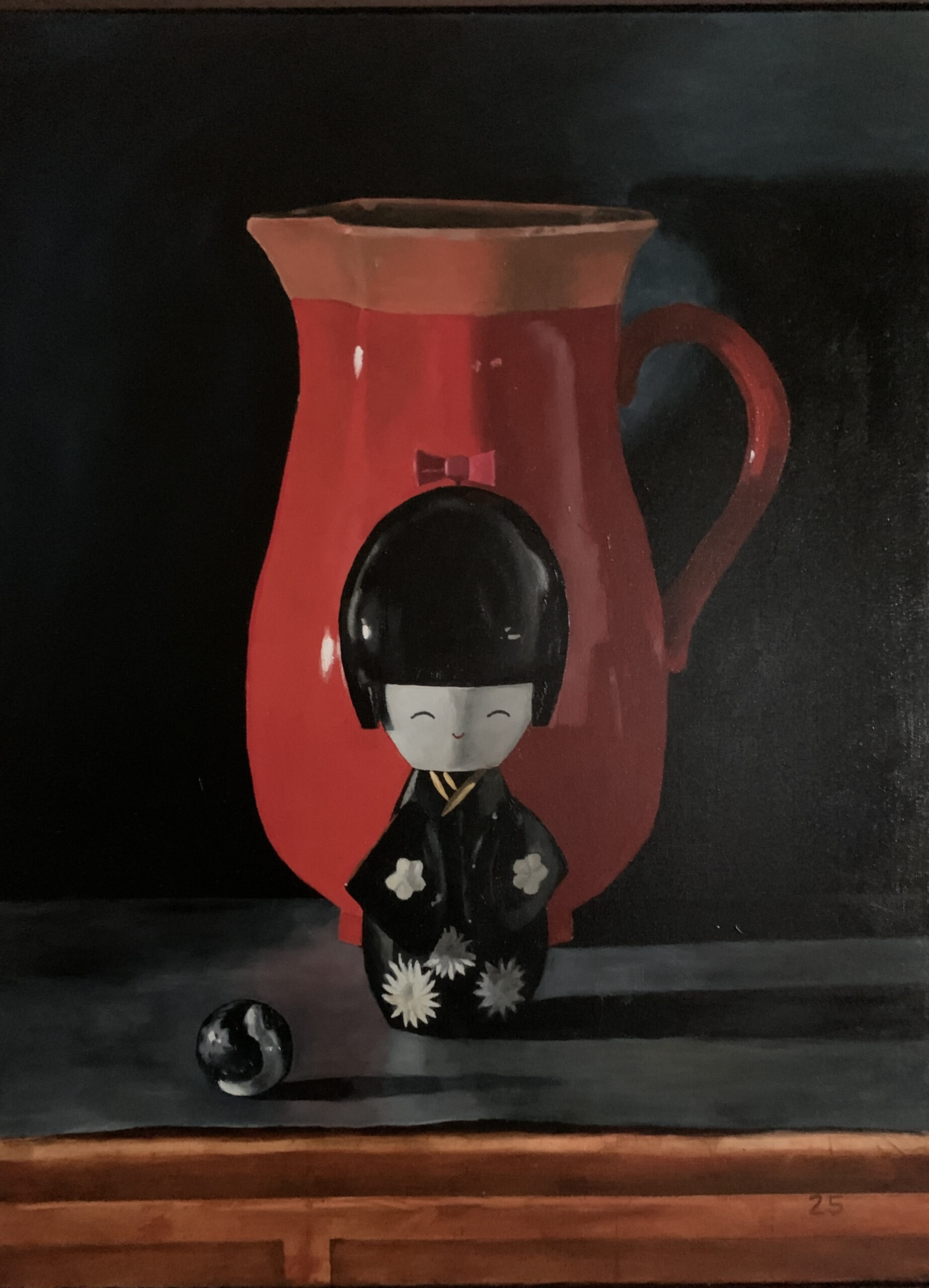
Joe Felber
Human Critical, 2016-25, oil painting, 180 x 180 cm
$14,500
33 days x 33 artworks, curated by the artist on paintings, drawings, photographies, installation, sculptures, discussions, teaching, mentoring. How to arrive with a complete different outcome than expected! Recycling cultures in the studio of Joe Felber. I invite everyone who is questioning – Is art still relevant to our society? Why art matters? I am responding to a view expressed by sceptical critics and conservative individuals who tend to disparage conceptual art. How much sound influences art? Art is a cultural portal, interaction and communication that reflects time. As an art teacher my goals is their creative goal to encourage art.
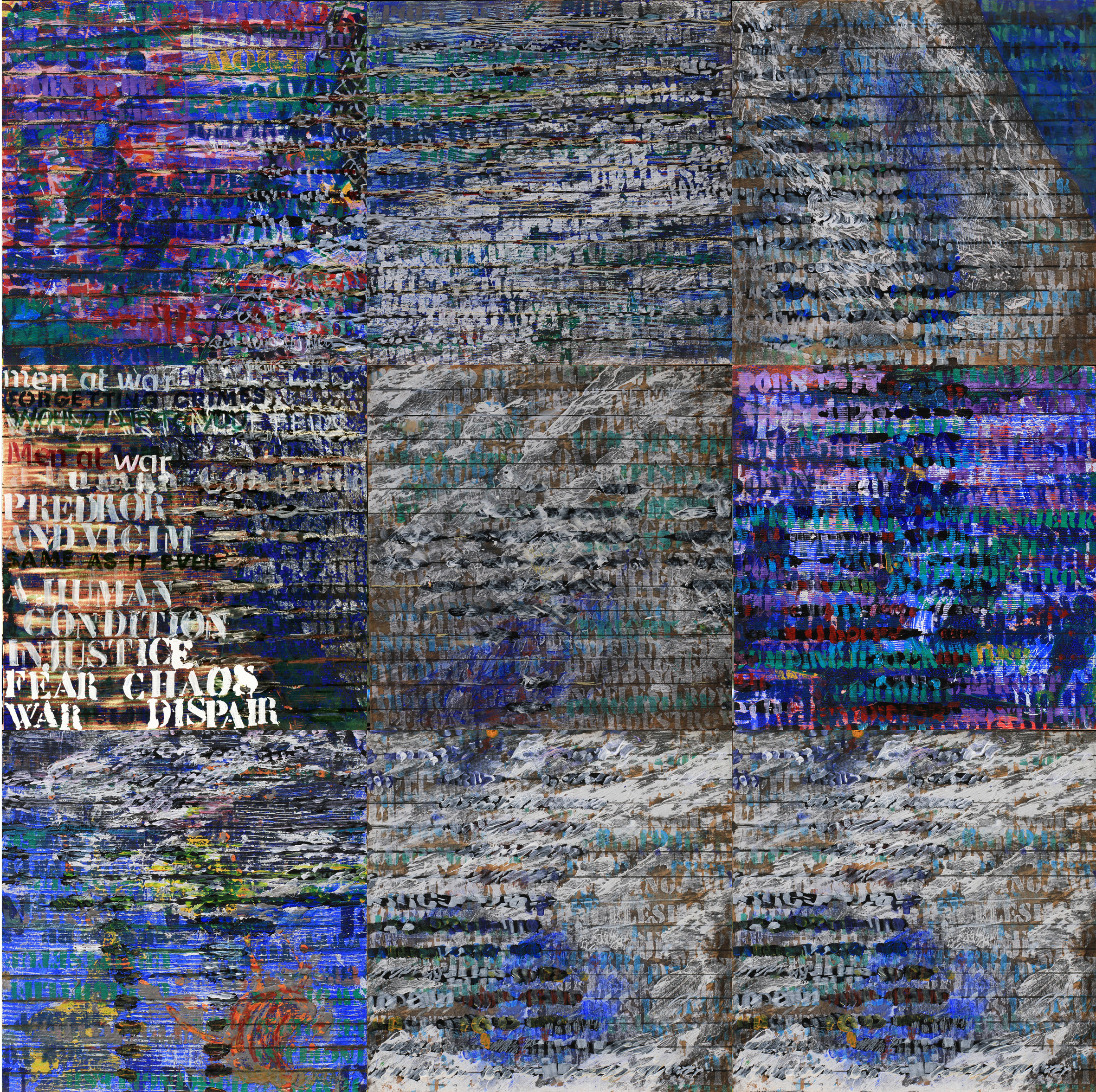
Kirsten Johnston
Trees Rising, 2025, acrylic paint on canvas, 100 x 100 cm
$950
The Australian bush can be chaotic. Species upon species live among each other, sometimes happily, sometimes in competition. The largest of these species are the trees, lifting their heads above the understory, rising to the sky.
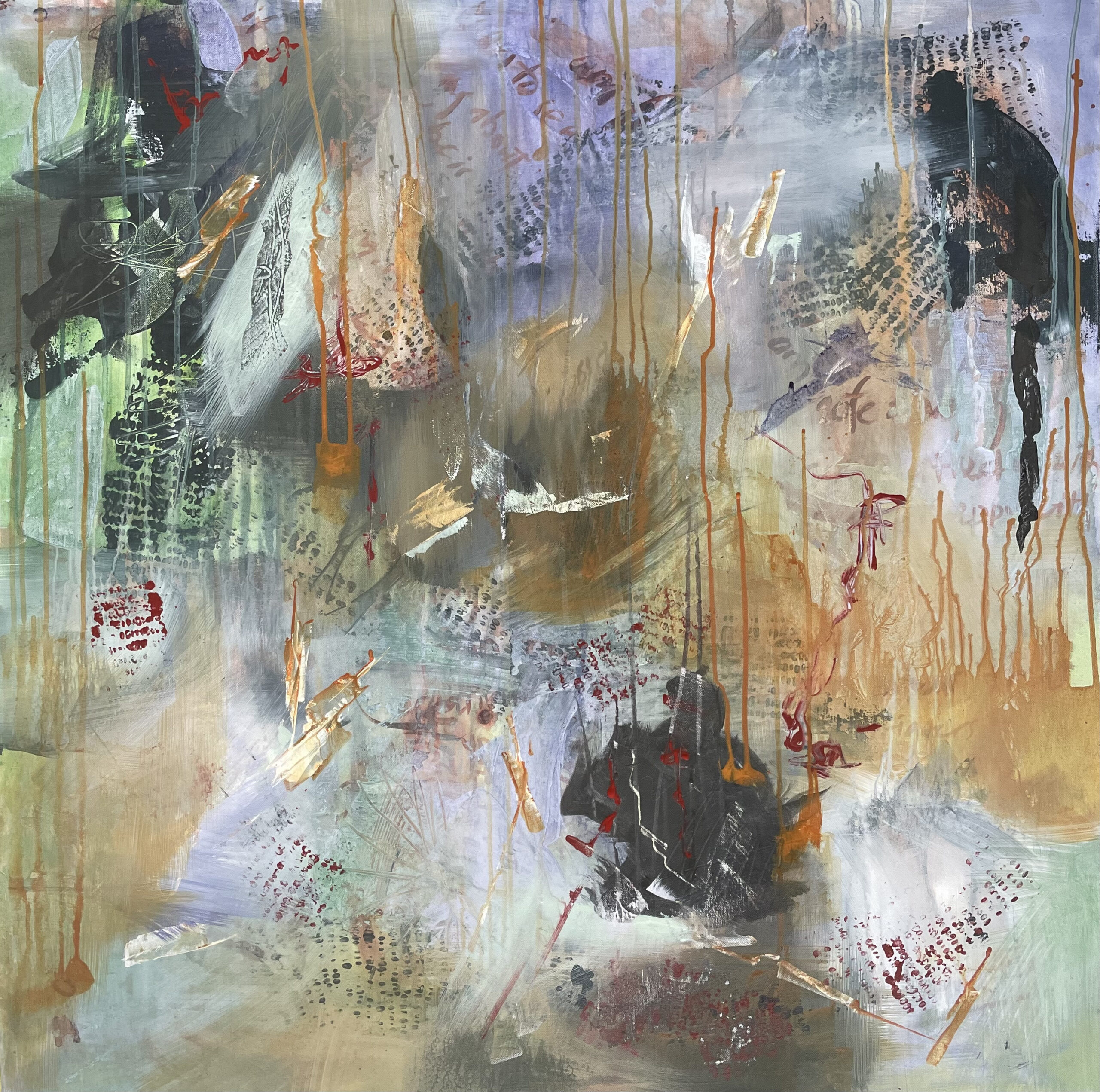
Marlize De Klerk
Mnemosyne, 2024, porcelain, 75 x 75 x 45 cm
$4,850
Marlize de Klerk’s ceramic practice explores memory, emotion, and sensory experience through sculptural porcelain vessels. Created through repetition, each piece becomes a site of quiet listening — attending to material, memory, and what is unspoken but felt. This meditative process allows unconscious traces to surface, embedding emotional resonance through time and touch. Informed by embodied practice and endurance-based making, her vessels draw on Walter Benjamin’s ‘aura,’ embodying presence through labour. Viewed as transitional objects, they bridge internal and external worlds. Rather than holding fixed narratives, they invite shared emotional reflection through their tactile surfaces and their presence.
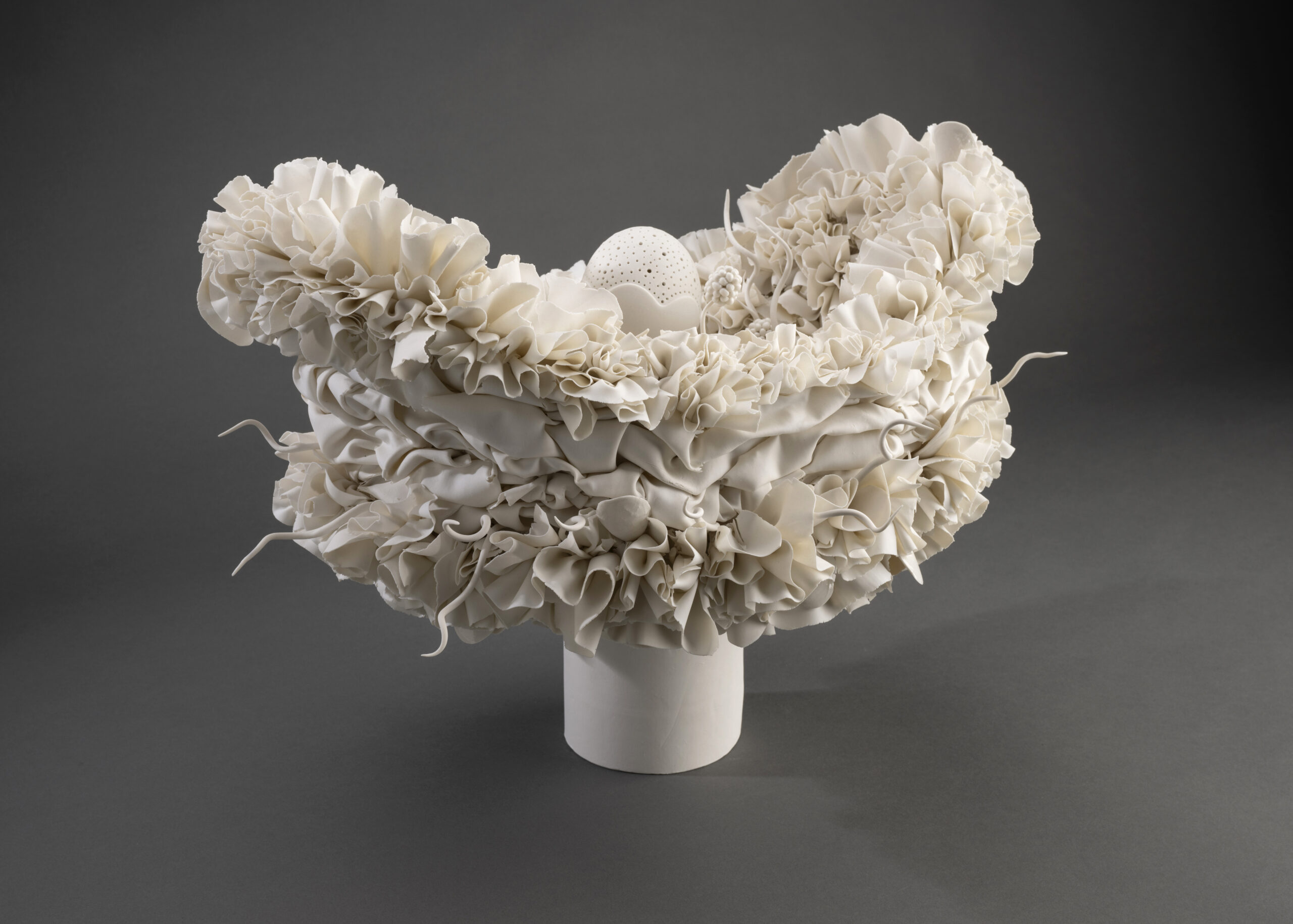
Nadera Rasulova
Transitory Ground, 2025, oil on canvas, 39.5 x 31 cm
$275
This work continues Nadera Rasulova’s exploration of land, memory, and cultural inheritance through abstract topography. With layered oil washes and gestural brushwork, she evokes a shifting landscape—one that feels both familiar and intangible. The forms hover between earth and cloud, tradition and transformation, reflecting her experience of navigating multiple cultural identities. Soft transitions contrast with bold colour blocks, inviting contemplation of what is held, lost, and reshaped over time. Rooted in a deep respect for place and environmental change, the piece speaks to the quiet power of inheritance—how it grounds us, even as it evolves.
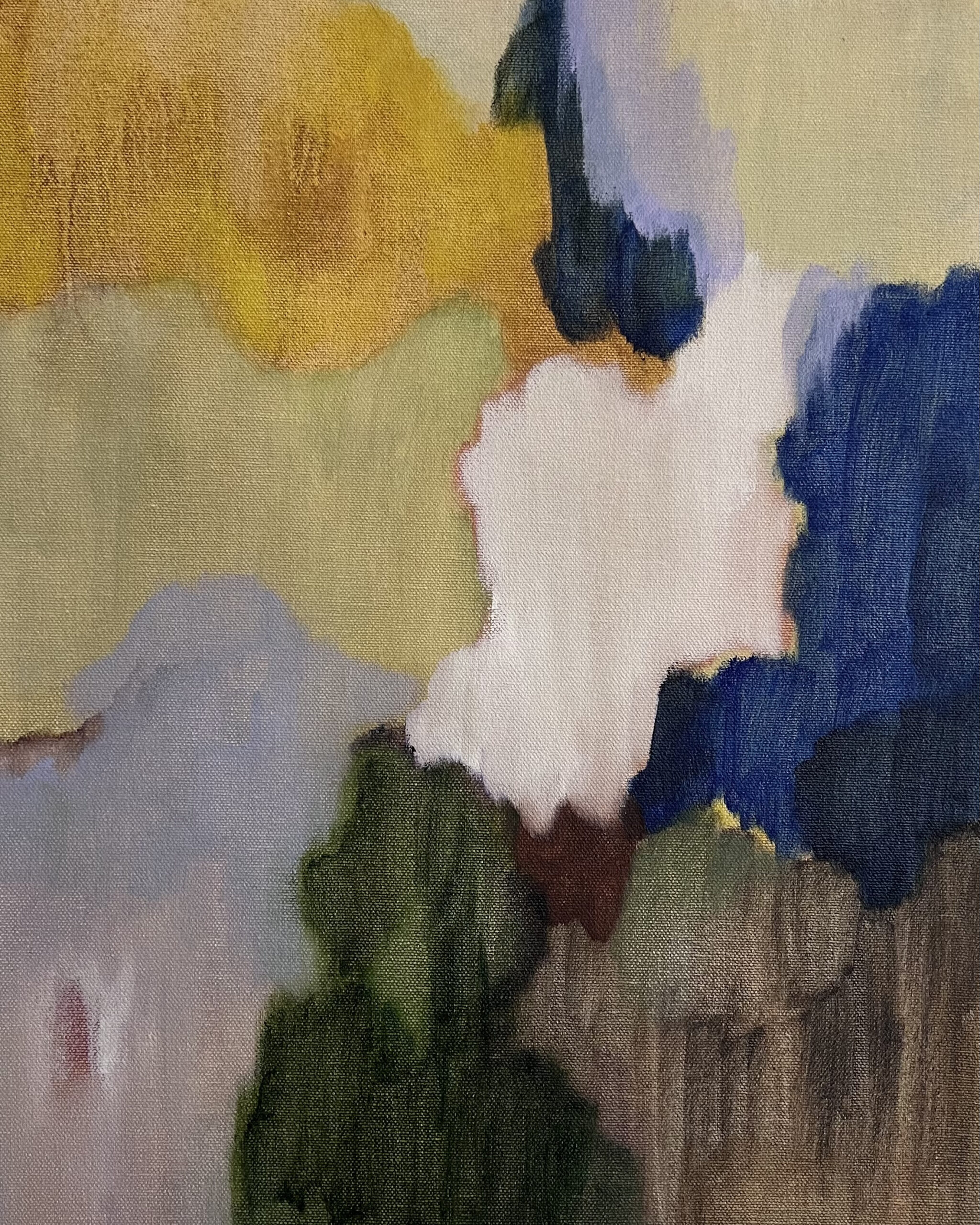
Peter Fitton
Rabbits of Okunoshima (Morlocks) earthenware ceramic, glaze, lustre, and flocking, 8 x 16 x 25 cm
$1,550
Okunoshima, known as Japan’s “Rabbit Island,” charms tourists with its population of friendly, free-roaming rabbits. Yet beneath this whimsical surface lies a grim history: from 1929 to 1945, the island was a secret site for Japan’s chemical weapons production. Inspired by this stark contrast, ceramic rabbits wearing gas masks were created, highlighting the island’s unsettling legacy. Using slip casting, press moulding, hand-building, the rabbits are crafted with distinct character, allowing for complex relationships between each other and the viewer. They confront the tension between innocence and violence, reflecting on the island’s dark past and the curious way it’s remembered today.
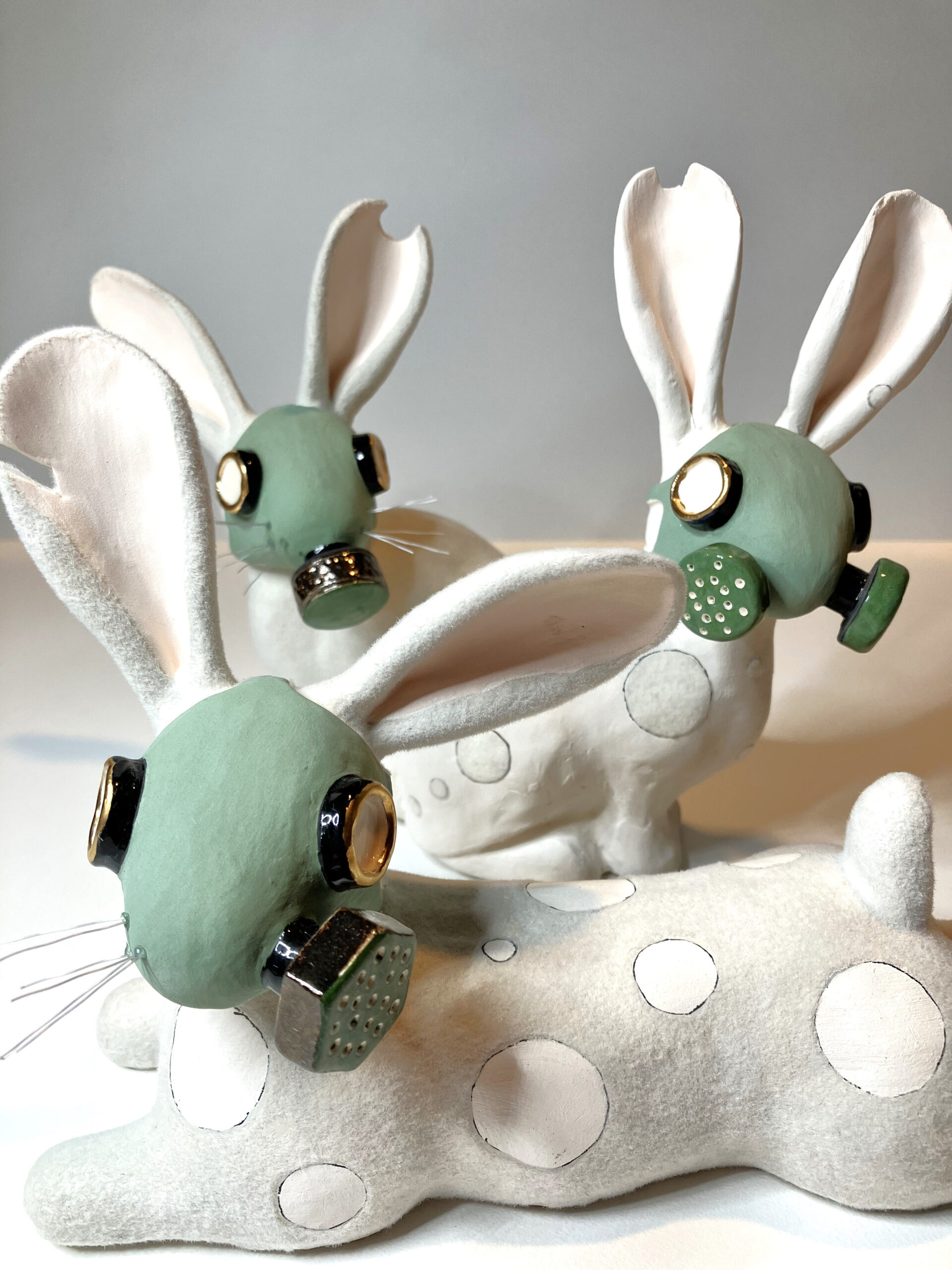
Rebecca Whittemore
What the Kitchen Forgets, Burnt Pumpkin Skin, 2025, scanogram, Giclee print on Ilford Smooth Pearl paper, 70 x 70 cm
$990, edition of 5
In her series, What the Kitchen Forgets, Rebecca Whittemore transforms food waste into fine art, revealing unexpected beauty in the overlooked. By scanning and enlarging kitchen scraps—like burnt pumpkin skin—she exposes their intricate textures and organic forms. These intimate images challenge viewers to reconsider what they discard and confront the environmental cost of everyday consumption. With Australians producing 312 kg of food waste per person annually, over 30% from households, her work underscores an urgent issue. Whittemore invites reflection on sustainability and renewal, encouraging us to see waste not as an end, but as a beginning.
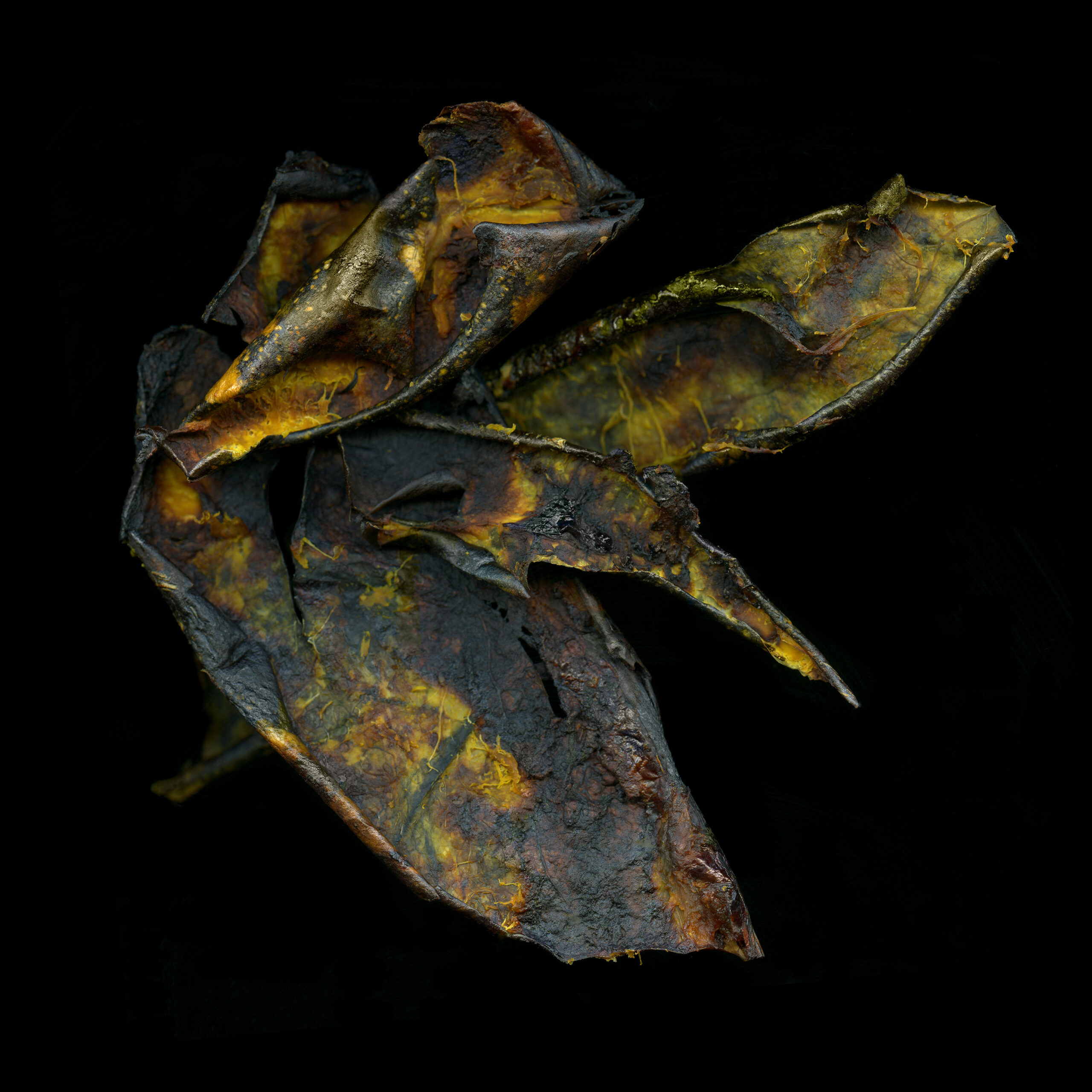
Sian Watson
Sentinel, 2024, steel, cement, paint, 110 x 60 x 33 cm
$4,300
Cattle have shaped landscapes, economies, and cultures; in turn, humans have shaped this animal. This piece reflects on that mutual influence, questioning our relationship to one another. The bull’s quiet and powerful presence invites viewers to consider this ancient partnership of survival, labour and beauty.
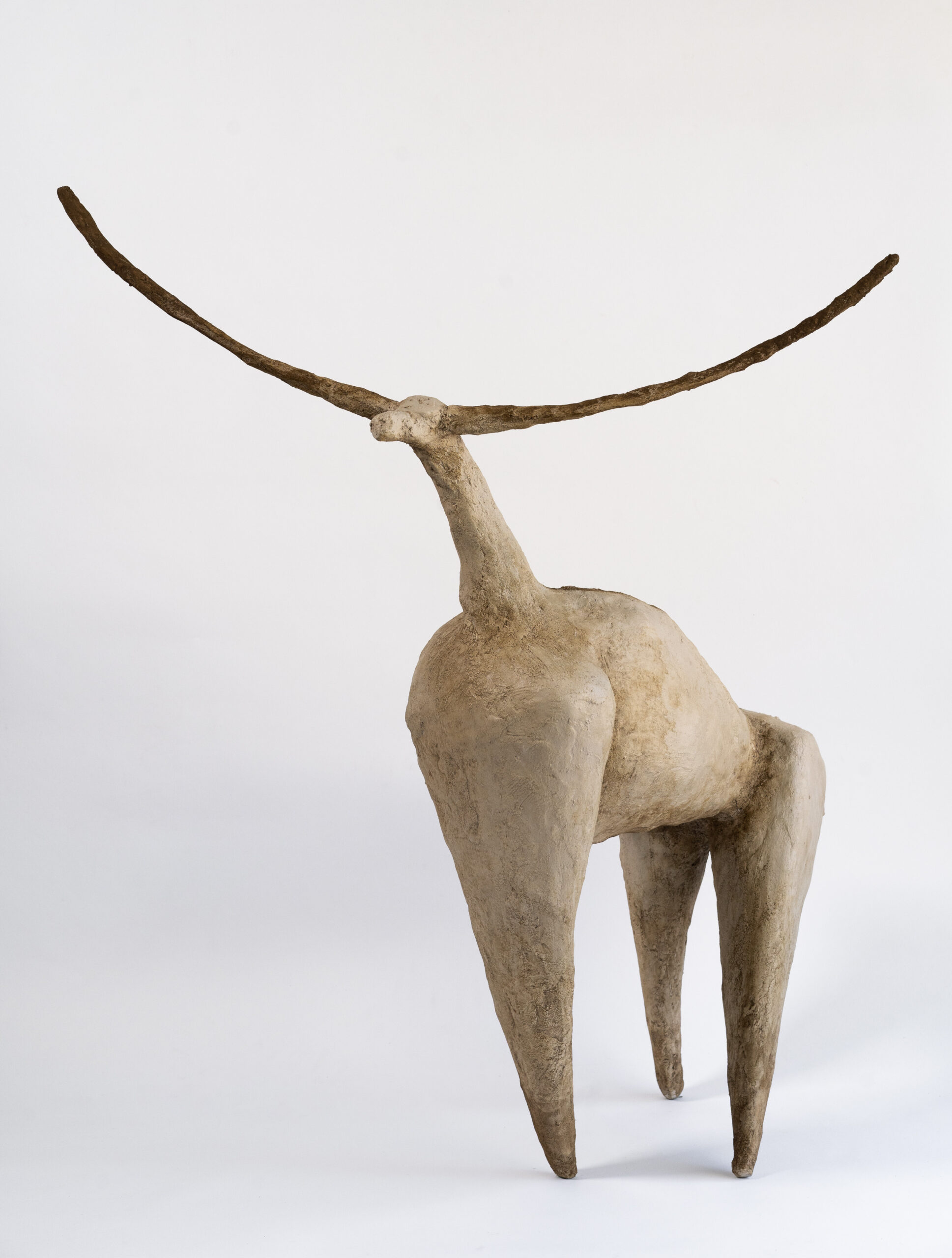
Thom Buchanan
fractal paradigm 2024, oil on canvas, 130 x 100 cm
$12,750
Step into a world where cities pulse with memory, and architecture leaves marks on the body as much as the skyline. Multidisciplinary artist Thom Buchanan dismantles the boundaries between built environments and human experience—rendering psychological and physiological landscapes in shifting, monumental forms.
Colliding in this immersive exploration of how space shapes us, stretches us, and sometimes threatens to swallow us whole.
